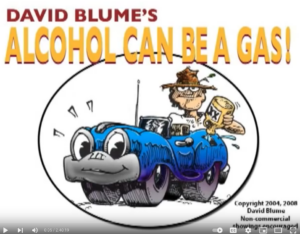Consumer Guide to Safe Skin Sanitizers:
Dangerous Ingredients to Avoid
Report from David Blume
Sanitizers are products we use to kill or neutralize harmful bacteria, viruses, and (in some cases) fungi from our skin and surfaces. By definition they are toxic to these microbes. Our goal is to use sanitizers to stay healthy and safe. But could it be that the cure is worse than the disease? It doesn’t have to be so, but most sanitizers on the market have harmful chemicals in them.
The Food and Drug Administration seems the logical government agency to regulate and safeguard the public from toxic substances and products used in or on the body. But does it? In reality, the FDA has a much narrower focus, primarily on prescription drugs. Cosmetics, in particular, are virtually unregulated, and quite a number of dangerous ingredients are found in them. In the grey area between cosmetics and pharmaceuticals are the over-the-counter (OTC) products. These are lightly regulated, primarily for health claims made on their labels and whether they actually do what they say they will do (efficacy).
Skin sanitizers fall in between cosmetics and OTC products. If a sanitizer says, “Kills 99.9% of bacteria,” it is an OTC. If a sanitizer does not make health claims, it is a cosmetic and receives little scrutiny.
Add to this the complication that the alcohol used in skin sanitizers (usually ethyl alcohol, which is also used as a beverage) is taxed and subject to a bewildering set of rules generated by the US Alcohol and Tobacco Tax and Trade Bureau. In order to sell ethyl alcohol without paying a crippling beverage tax, it must be denatured — made unlikely to be consumed. Some of these denaturants can be poisonous and still not violate the law.
Here’s a look at some of the dangerous ingredients commonly found in skin sanitizers.
Triclosan
Triclosan is an endrocrine disruptor that mimics estrogen, the female hormone. It disrupts many systems in the body and affects microbes. But there are no studies to show that it is an effective antiseptic! Since it damages the DNA of bacteria, it kills some but causes others to mutate. Bacteria treated with this chemical often mutate into antibiotic-resistant versions. Triclosan also compromises the body’s immune system. In a 2011 study, the CDC showed that people using sanitizer containing triclosan were more than six times as likely to be infected by norovirus (gastroenteritis). Triclosan also interacts with bisphenol A (BPA), the well-known chemical in plastics, to cause greater hormonal side effects. Triclosan has been banned along with 27 other chemicals used in sanitizer.[1] It continues to be used in sanitizers that are only considered cosmetics instead of OTC drugs.
Benzalkonium Chloride
Paradoxically, although it was developed as a replacement for triclosan, benzalkonium chloride is toxic, too. Its early use was as a preservative in eye medications. But due to its toxicity to eyes, pharmaceutical companies are abandoning it. Its similar use in nasal sprays has revealed a major hit list of inflammatory and neurological damage to the inner ear. It also reduces immune function of white blood cells. The FDA considers it as a Category III drug, for which “available data are insufficient to classify as safe and effective, and further testing is required.” As it is such a powerful endrocrine disruptor, it is used as a contraceptive in China and Russia!
Glycerin
Glycerin is one of the most common ingredients in sanitizer. It can come from petrochemical sources, plant sources, or, infrequently, from animal sources. It is used as a humectant, or moisturizer. This quality is desirable since most sanitizing substances like alcohol can dry out skin. In the right ratio, it will give a silky feel and pleasantly soften the skin. Organic glycerin always comes from plants. When glycerin originates from petroleum, there can be a number of by-products that are poisonous contaminants. One of the most prominent is diethylene glycol. It’s a poisonous liquid which is banned as a food or drug additive by the FDA but is not monitored as a contaminant in cosmetics. It is also used as a counterfeit for pharmaceutical glycerin, especially in China in toothpaste and in Europe to sweeten some wines.[2] Since a large percentage of low-cost sanitizers come from China, adulteration with inexpensive diethylene glycol rather than more expensive glycerin is suspected.
Conventional glycerin is processed with methanol to remove the valuable fatty acids for other purposes and can leave residues unless thoroughly distilled to remove it. Certified Organic Plant glycerin encounters none of these problems, nor residual pesticides from its manufacture.
Parabens
Common in cosmetics, parabens are also found in sanitizers that do not contain alcohol. They are used as a preservative in skin care products. A preservative may prevent a mixture from “going bad,” but it generally only affects bacteria that might feed on the product ingredients. When it comes to preventing COVID-19, a virus, this amounts to wishful thinking at best. Consumers are therefore misled into thinking that they have adequate protection.
Phthalates
- Phthalates are often quite volatile and therefore easily absorbed by the skin. They are also the “secret sauce” of synthetic scented products. They are among the more powerful hormone mimics used in sanitizers. Shockingly, the FDA cannot compel makers to disclose the ingredients in their proprietary scents. Nor is it possible to know just how many petroleum-based phthalates are involved. The greater the number, the more likely that, working together, they can have exponentially more effect. Phthalates and their chemical relatives have been implicated in male sterility, since female hormone mimics have damaging effects on sperm production and viability. In a study of phthalate levels in Danish children, “the highest exposure levels were found for DBP(i+n) [dibutyl phthalate] and DEHP [bis(2-ethylhexyl)phthalate], which in animal models are the known most potent anti-androgenic phthalates. The combined exposure to the two isoforms of DBP, which have similar endocrine-disrupting potencies in animal models, are the known, most potent, anti-androgenic phthalates. The combined exposure to the two isoforms of DBP, which have similar endocrine-disrupting potencies in animal models,” pack an even more powerful punch.[3]
- In women, powerful estrogen mimics have been partially responsible for the skyrocketing rate of breast cancer since WWII. A recent paper in Nature Reviews Endocrinology[4]advises women to consider “eliminating use of any personal product such as skin sanitizers, moisturizer, perfumes, or cosmetics that contains phthalates.” Since the phthalates in synthetic scents are not listed on ingredient labels, look for products with labels that show natural, preferably organic, essential oil scents.
Other Alcohols
Although the gold standard of sanitation is ethyl alcohol, there are literally hundreds of substances that are technically “alcohols.” Beeswax is an alcohol whose molecule is so large that it is a solid at room temperature. The run on ethyl alcohol has resulted in some sanitizer companies switching to other alcohols without much regard to safety. Each of these alcohols is dramatically different in its effects on the body.
Methyl Alcohol (Methanol)
- Typically this is produced from petroleum gas or, to a lesser degree, coal. It is so poisonous that the consumption of one ounce (30ml) is enough to cause death! With the shortage of ethyl alcohol, some unscrupulous companies have started substituting methanol for it. Methanol is notorious for skin absorption, quickly causing skin irritation and defatting of the skin. Moisturizers added to sanitizer make the absorption of methanol even more Methanol, when absorbed, becomes formaldehyde in the liver. Yes, that does mean you literally pickle your liver. It also can cause permanent blindness, heart and lung collapse, coma, and death. It is also cumulative[5] — your body accumulates more and more methanol with each application until you reach a catastrophic dose. Multiple deaths occurred in June 2020 in Mexico where methanol was used in a sanitizer. The FDA on June 21, 2020, called out nine U.S. sanitizers containing methanol to be taken off the market.[6] They recommend that anyone who has applied those sanitizers to their skin seek medical help immediately, even if there are no obvious symptoms.
Isopropyl Alcohol
- Isopropyl alcohol is the common disinfectant you find in U.S. drugstores. It is a legal disinfectant. That doesn’t mean it should be a daily sanitizer. Isopropyl is synthesized from petroleum, and is quite toxic. It’s okay to use on your skin — but only when you get the occasional cut and need to disinfect it. It has never been approved for repeated daily use. Unlike ethyl alcohol, it is extremely toxic. If you, as an adult, drink as little as 2/3 of an ounce (20ml), you risk injury and possibly death. It will cause kidney damage. It can cause coma and death due to lung failure. It is a neurotoxin. Used repeatedly, it dissolves healthy fats that are part of the skin — think big wrinkles. It’s very irritating or injurious to eyes. Get help immediately if rubbed into eyes![7]
Tert-Butyl Alcohol
- Another toxic substitute for scarce ethyl alcohol, tert-butyl alcohol is another petrochemical. It is also known as butanol. It is easily absorbed through the skin, and has powerful neurotoxic effects, causing loss of hearing, damage to liver and kidneys, permanently blurred vision, nausea, and dizziness. It causes tumors and is assumed to be carcinogenic.[8] It causes skin irritation and is very dangerous to get into your eyes. This chemical is increasingly being used, due to its low cost.
Denaturants
Acetone
- Acetone is the cheapest chemical to add to alcohol to make it undrinkable. It is a very volatile petrochemical and is highly irritating to the eyes. Do not wear contact lenses when handling sanitizer that has acetone as an ingredient! It is easily absorbed through the skin, and it damages, dries, and defats the skin. It can cause intoxication, disorientation, central nervous system depression, and sleepiness, and it causes vomiting if ingested.[9]
Methyl Isobutyl Ketone
Used as a denaturant, methyl isobutyl ketone is fiercely toxic. It targets the kidneys and liver, damaging both. It is carcinogenic, causing multiple forms of cancer in these same organs.[10]
Specially Denatured Formulas
These recipes are used to denature alcohol to avoid paying the alcohol tax to the TTB. Denaturing refers to making the ethyl alcohol undrinkable. Not all formulas are toxic. The following list of TTB-approved denaturing formulas contains the ones that are the most toxic. Some companies list their formula details on their packaging. Some manufacturers disguise their recipes by simply referring to the TTB formula number.
This list is only of the toxic chemicain each formula, not all the ingredients. These formulas should be avoided no matter how large or prestigious the company selling them.
Formula 3-A cyclohexane (gasoline) or methanol
Formula 3-C isopropyl alcohol
Formula 23-A acetone
Formula 23-B acetone
Formula 23-H acetone and methyl isobutyl ketone
Formula 39-B diethyl phthalate and tert-butyl alcohol
Formula 39-C diethyl phthalate
Formula 40-A tert-butyl alcohol
Formula 40-B tert-butyl alcohol
Formula 40-C tert-butyl alcohol
To Sum It All Up
Using this article as a guide, you may avoid exposure to the toxic materials discussed. But instead of focusing on things that are bad for you, you can focus on those things that are good for you. The only way to be sure that your sanitizer is truly good and safe is to look for Organic Certification, which means that no synthetic substances are used in the product. Beware of products that claim to be organic but contain any of the problematic chemicals discussed above.
Pandemics of varying intensities are always with us — from colds, to annual various strains of the flu, AIDS, Ebola, cholera, shingles, Zika, SARS, dengue fever, measles, E. coli, and a wide range of little-known microbes/diseases which can mutate from weak threats to killers. The entire world is now sensitized to sanitation. COVID-19 has caused a ream of new regulations requiring industries — restaurants, food processing operations, hotels, building contractors, airlines, health care providers, dentists, gyms, massage therapists, rental car agencies, supermarkets, assembly lines, etc. — to have sanitizer available constantly. With this newly ingrained habit, it becomes more important than ever to be aware of what you absorb through your skin, often multiple times a day. The safest route for your health is always choosing and preferably carrying your own, certified organic products. Toxic chemicals are never permitted to be included under that label. But when that choice isn’t available, it’s up to you to be aware, as a consumer, of what is safe to use.
Be Safe Out There.
— David Blume
[1] https://cen.acs.org/safety/consumer-safety/US-FDA-finalizes-hand-sanitizer/97/web/2019/04
[2] https://en.wikipedia.org/wiki/Diethylene_glycol
[3] https://www.sigmaaldrich.com/catalog/papers/21429484
[4] Braun, Joseph M. (18 November 2016). “Early-life exposure to EDCs: role in childhood obesity and neurodevelopment”. Nature Reviews Endocrinology. 13 (3): 161-173. doi:10.1038/nrendo.2016.186.PMC5322271.PMID 27857130.
[5] https://fscimage.fishersci.com/msds/14280.htm
[6] https://www.cnn.com/2020/06/22/us/hand-sanitizer-fda-trnd/index.html
[7] https://fscimage.fishersci.com/msds/89530.htm
[8] https://fscimage.fishersci.com/msds/89530.htm
[9] https://web.archive.org/web/20090320150055/http://jmloveridge.com/cosh/Acetone.pdf
[10] https://www.ncbi.nlm.nih.gov/pmc/articles/PMC2683681/
Posts

R. Buckminster Fuller’s Foreword to Alcohol Can Be a Gas!

Dangers of Hand Sanitizers

David Blume’s Classic Talk on Alcohol Fuel

Sustainable Agriculture’s Role in Climate Change


